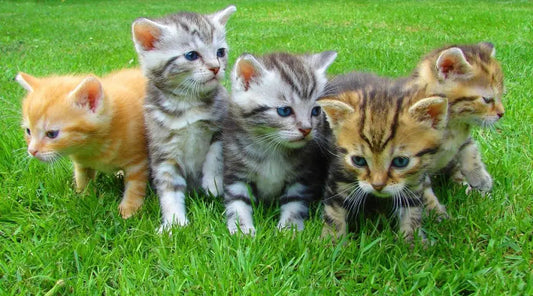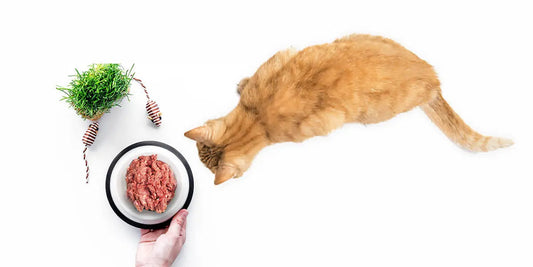
Tips for Understanding Your Dog’s Body Language
Written by Darwin's
Every dog owner wishes their dog could talk. We want to know what is going on in their minds, and we often wonder what they would tell us if they could.
Since their version of talking is generally barking, we are limited to watching their behavior. Interestingly, understanding dog body language can tell us everything we need to know about our faithful friends.
Figure Out Your Dog's Baseline
When you first brought home your new pet, you studied them for hours to find a name that suited their personality. Similarly, you can watch them now to figure out their trademarks.
All dogs, like humans, will default to certain behaviors when they are relaxed or happy. You may notice that they tend to lie a certain way or place themselves in the same spot every night when they settle in. A relaxed dog is fluid in their movement, their features are soft, and they are happy just existing. Their tail may wag and their ears will lie in their normal position. when you give them their favorite treats from a reliable pet food delivery.
Figuring out their baseline is key to understanding when your queen is on edge or uncomfortable. If you know when she’s at ease, you’ll better be able to tell when she isn’t. It’s also easier to know if your dog is safe for kids to play with.
Look for Subtle Changes
Where the mistake in reading a dog’s body language often occurs is missing very small, subtle behaviors.
Obviously if your dog has just eaten, they will lick their lips, or if he’s been running around the yard, he’ll likely be panting. But it’s noticing these behaviors in the absence of their normal association that will clue you into your dog’s mood. Lip licking, yawning, excessive panting or drooling are all signs of stress in a dog, and you may want to identify what’s making them uncomfortable. Removing the dog from a distressing situation at this stage can easily prevent any further stress and potential altercations with other dogs or people.
But He’s Smiling, Isn’t He?
This one is a huge bug bear of anyone who works with dogs and knows how to read dog body language.
Your pup may look cute when they “smile” - teeth bared with his lips pushed up. But unless you have a Staffy or Pit (who do seem to smile when they pant), this behavior isn’t typically a happy one. Instead, this can often mean your dog is in distress, especially if it is paired with a pinned back ear.2
Pet owners often encourage and photograph this “smile.” Instead, it’s best advised to stop what you’re doing or remove the dog from whatever is causing them stress. Save the photo op for when your pup is relaxed and at ease.
Look at the Whole Body
If your dog is unhappy, they will tell you with every part of their body, not just their face. A stressed dog (due to anxiety or fear, for example) will widen their eyes; this is to gain as much information as possible about their environment.
Their ears will lie differently to normal. If usually up, they will lie flat, or if usually flat, they may sit back.
You may notice their whole demeanor changes; they may walk tentatively or slowly.
Equally, they may become super-aroused and try to lunge. You may notice their hair will stand on end around their shoulders and along their spine. Any deviation from the norm can be indicative that your dog isn’t happy about something!
Additional Tips for Understanding Your Dog’s Body Language
Here are some other tips that can help you understand canine body language:
Observe Tail Wagging
While a wagging tail often indicates happiness, the speed and direction of the wag can convey different emotions. A slow tail wagging can indicate uncertainty, while a fast, wide wag usually signals excitement. Pay attention to the context to interpret your dog’s feelings accurately.
- Monitor Ear Positions: Erect ears generally mean your dog is alert and interested, while flattened ears often signal fear or submission. By observing these ear positions, you can gain insight into your dog's emotional state.
- Notice Open Mouth and Facial Expressions: A relaxed dog often has an open mouth, almost like a smile. However, a closed mouth with tense facial muscles can indicate stress or discomfort. Understanding the facial expression of your pet can help you read dog body language better.
- Recognize Aggression and Stress Signs: Signs of aggression include growling, showing teeth, and a stiff body posture. Stressed dogs may show calming signals such as yawning, lip licking, or turning away. Recognizing these signs early can prevent unwanted behavior.
How to Respond to Your Dog's Body Language
- Provide a Safe Environment - If you notice signs of stress or discomfort, remove your dog from the situation causing these feelings. Creating a safe and calm environment is crucial to having happy dogs.
- Consistent Training and Positive Reinforcement - Consistent dog training using positive reinforcement techniques can help your dog feel more secure and understood. Reward calm and relaxed behavior to reinforce these states.
- Maintain Oral Health and Provide Quality Pet Food - A healthy diet contributes to overall well-being. Ensure your dog’s oral health is maintained with proper dental care, and provide high-quality fresh dog food.
Enhance Your Dog's Diet with Premium Protein Varieties from Darwin's
In addition to understanding your dog's body language, providing them with the right diet is crucial for their overall well-being. Darwin’s offers a range of premium recipes featuring free-range meats and organic vegetables that provide complete nutrition for your dog. Our products are free of steroids, antibiotics, and hormones, ensuring a healthy diet for your pet. Our offerings include duck dog food and chicken and beef dog food, and various other protein types. Our raw dog food is minimally processed to preserve the vital nutrients your dog needs, supporting not just their physical health but also their emotional well-being by reducing stress and anxiety.
In Summary:
Dog’s will tell us everything we need to know; we just need to know what to look for.
Noticing subtle behaviors could help prevent any escalation of behavior.
Notice any changes when visitors come to the home or there is a change in routine.
It’s your job as an owner to change the situation if your dog is struggling. Your little prince or princess will thank you for it.
For more tips on dog communication and training, check out Darwin's Natural Pet Products blog. We provide various information on pet health, body posture, and maintaining a happy, healthy furry friend.
If you own a cat, we also have related articles about how much to feed your cat and keep them healthy and happy.



